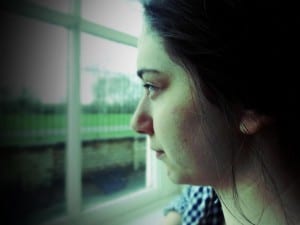This week we looked at ‘The Many Headed Monster’ which looks at different ideas of audience and how these are portrayed in contemporary performance. It looks at examples of audience in pre-performance, performance and post-performance. Obviously as our performance uses a lot of audience participation we found a few similarities between some of the performances and ours.
The first one that pushes the idea of audience is Joshua Sofaer’s Scavengers during which teams of participants travel around the host city finding a number of absurd items. These are then all put on display in a museum post performance. I really like the idea of displaying what is used within the performance in a post performance environment. I think it could be interesting to see what kind of installation we could build using the airplanes and letters that we use during the perfomance. Sofaer says that he want to “use art to enable people too see the world as a place of potentiality and to become more active citizens” (Sofaer, 2014). I think this is something at also applies to our performance in how it is completely reliant on audience participation and without it the performance would fail. This is the same for Sofaer’s work- without participants there would be no art.
The next piece of work that interested me was Oreet Ashery’s ‘Say Cheese’ (2002). In this one to one performance a woman is dressed as a Jewish man and performs something that resembles a therapy session with the participants. The performance is very intimate and the audience members at times can be made to feel uncomfortable. Within our performance this is something we are want to achieve. Although our performance is not one to one there are still moments when we will be able to address one participant in an intimate way. For example laying your head on their lap or shoulder and holding their hand close to you. Some participants may not find this awkward and off putting but many of them will. Pictures were taken of each audience member with Ashery and these were sent out at a later date so the audience were reminded of the performance once again a few weeks after their initial experience. This is another idea we could toy with. We could send them away with a memento of the experience so that every time they see it their feeling towards the performance are reinstated.
Another piece of work that shows a fully co-operative and active audience is Hermann Nitsch’s Action 122 (2005). If you examine this work carefully you can see that there are several types of audience within this performance. Firstly, there is the audience that comes along to participate and help create the work. Secondly, there is the audience that come to be an audience. Thirdly, there is the unknowing audience who catch a glimpse of the performance as it leave the theatre and spills out onto the street. This is definitely something that we will want to look into. There is the audience currently that participates in the performance and the those that do not take part and just watch the action unfold in front of them. It would be interesting to see if we could some how incorporate the third type of audience. This could possible be done by letting the third type of audience observe the installation that we may include or maybe we could somehow incorporate the general public that pass the grandstand on a daily basis.
References-
Sofaer, Joshua, 2014, About Joshua Sofaer [online] Avaliable at:http://www.joshuasofaer.com/about/ [Accessed March 29th 2014]
.



